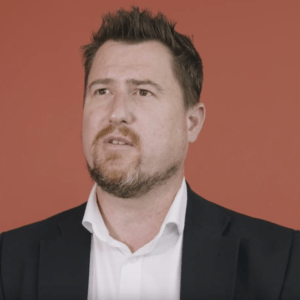Are you on a quest to test out a brilliant business idea or innovative product concept?
Well, guess what?
You’ve landed in the right place!
We’re going to dive into the process of customer discovery that can make or break your startup’s success.
So, grab a comfy seat and get ready for an adventure, because we’re about to unravel this intriguing concept together.
What is customer discovery?
How all started?
Customer discovery actually started with the Lean Startup movement. It’s all thanks to Steve Blank and Eric Ries, who really shook things up.
Steve Blank, the guy behind “The Four Steps to the Epiphany,” was the first to bring up customer discovery. Then, Eric Ries, who wrote “The Lean Startup,” took Blank’s ideas even further and made customer discovery a key part of his groundbreaking approach.
Both of them totally understood how crucial it is to get to know your customers’ needs and wants, so you can create products and services that hit the nail on the head.
Pretty cool, right?
So, what’s customer discovery all about?
Customer discovery is a process where you actively engage with potential customers, learning about their needs, preferences, and pain points.
By paying close attention to your target audience and tweaking your product or service based on what they say, you’re way more likely to create something that they’ll totally love and, ultimately, find success in the market.
It’s all about listening and adapting!
The benefits of customer discovery
If you are still not convinced to start planning your customer discovery process, I am here to change your mind.
Let me walk you through some great outcomes you can get when conducting customer discovery:
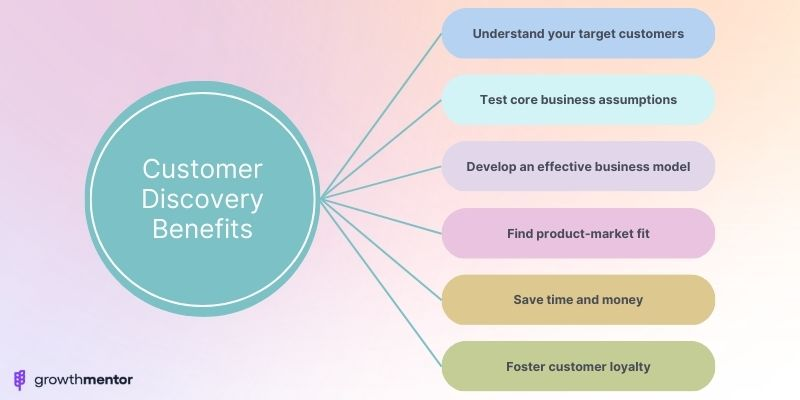
- Understand your target customers: The customer development process helps you create a detailed customer persona, giving you insights into your ideal customer’s problems, needs, and preferences. This way, you can tailor your value proposition to their desires.
- Test core business assumptions: Performing customer discovery interviews allow you to validate or invalidate your core business assumptions, ensuring you’re on the right track with your product idea.
- Develop an effective business model: By understanding both the problem and the solution, the customer development model guides you in building a solid foundation for your business plan.
- Find product-market fit: Engaging in continuous customer discovery helps you fine-tune your product based on the feedback you will get, increasing your chances of achieving product-market fit.
- Save time and money: Focusing on what matters to your target customer helps you avoid wasted development time and resources, maximizing the efficiency of your development team.
- Foster customer loyalty: By addressing customers’ problems with your product solution, you build trust and strong relationships, turning casual users into loyal early adopters.
Customer discovery process
Curious about the customer discovery process?
No worries, let’s take a quick stroll through the main steps to give you a clear picture of how it all works:
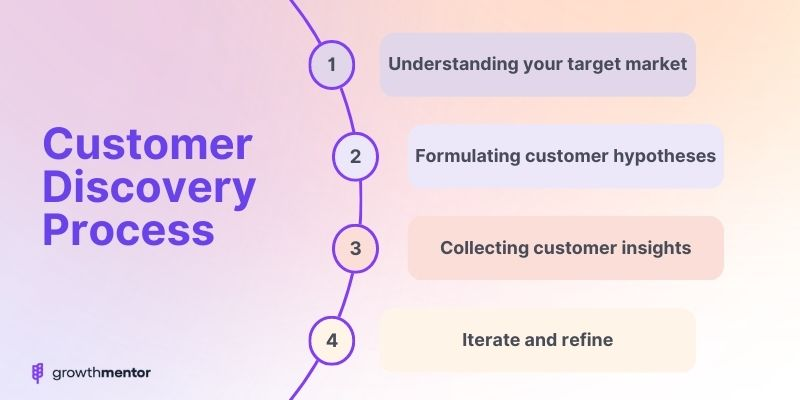
Step 1: Understanding your target market
Let’s start this exciting journey by getting to know your customers better.
After all, you can’t hit the bullseye if you don’t know where the target is, right? So, roll up your sleeves and dive into researching and identifying your ideal customer.
First things first, you’ll want to explore your target market’s demographics, like age, gender, income, and location. But don’t stop there – also consider their psychographics, such as values, attitudes, interests, and lifestyle preferences.
This will help you build a detailed customer persona that brings your target customers to life, making it easier to design a product or service that truly resonates with them.
Step 2: Formulating customer hypotheses
In this step, you’ll come up with some guesses about your customers’ needs, preferences, and pain points. These hypotheses will serve as a starting point for your customer discovery journey.
To gain a comprehensive understanding of your customers, it’s essential to explore different types of customer hypotheses:
- Problem hypotheses: These hypotheses focus on identifying the specific pain points, challenges, or unmet needs your target customers face. For example: “Working parents struggle to find healthy, quick meal options for their families.”
- Solution hypotheses: These hypotheses propose potential solutions or features that address the identified problems. For example: “A meal planning app with preloaded healthy recipes and grocery lists would help working parents save time and provide healthier meals for their families.”
- Behavior hypotheses: These hypotheses explore how your target customers currently behave or make decisions in the context of the problem you’re trying to solve. For example: “Working parents often resort to fast food or takeout due to a lack of time for meal preparation.”
- Value hypotheses: These hypotheses examine the unique selling points or benefits your product or service offers that differentiate it from competitors. For example: “Our meal planning app’s automated grocery list generation and recipe customization will save working parents time and reduce mealtime stress.”
- Customer segment hypotheses: These hypotheses focus on identifying and defining specific groups within your market that share common characteristics, needs, or preferences. For example: “Single working parents with young children have unique meal planning challenges compared to dual-parent households.”
Step 3: Collecting customer insights
Time for action! This step is all about engaging with your potential customers and gathering their priceless feedback. So, buckle up and get ready to conduct interviews, surveys, or focus groups to learn what makes your audience tick.
Remember, the key here is to listen closely and take notes – after all, your customers are the experts on what they want and need.
To help you out, here’s a handy template of questions to ask during your customer discovery interviews:
- Can you tell me about a time when you experienced [problem you’re trying to solve]?
- How did you deal with that situation? What solutions have you tried?
- What challenges do you face in [context of the problem]?
- What’s your biggest frustration when it comes to [problem]?
- How do you currently handle [problem or situation]? What are the biggest pain points in the process?
Tip: Want to get the most out of your customer discovery process?
Use open-ended questions! By giving your potential customers the freedom to express themselves, you can uncover valuable insights that might otherwise be missed.
Not only that, but it also leads to more engaging conversations and helps you build a stronger connection with your target market.
Step 4: Iterate and refine
You’ve done the hard work and gathered a treasure trove of insights from your potential customers.
Now comes the fun part. Use those golden nuggets of wisdom to iterate and refine your product or service. Remember, Rome wasn’t built in a day, and neither is the perfect product – it’s all about trial and error!
Take a close look at the feedback you’ve collected and use it to update your hypotheses, tweak your value proposition, and adjust your approach. Keep your eyes on the prize – finding that sweet spot known as product-market fit.
Types of customer discovery approach
You’ve got the customer discovery process steps down, and now it’s time to pick the perfect approach for your needs – online or in-person.
Lately, we’ve seen a massive surge in online methods, but each approach has its own unique advantages.
So, choose the one that works for you, and start uncovering those customer insights!
Online customer discovery

Surveys
Create online surveys to gather feedback from your target audience.
- Pros: Easy to create, reach a large audience, and gather quantitative data.
- Cons: May not provide in-depth insights, and response rates can vary.
- Tools: Google Forms, SurveyMonkey, Typeform, Qualtrics, etc.
Online interviews
Conduct video or phone/audio interviews to chat with people and hear their thoughts directly.
- Pros: Convenient, cost-effective, and can be recorded for later analysis.
- Cons: Potential technical issues, and may lack the personal connection of in-person interviews.
- Tools: Zoom, Microsoft Teams, Google Meet, and Skype to name some.
Online focus groups
Gather a group of people online, perhaps via video conferencing, to discuss specific topics and exchange ideas.
- Pros: Access to geographically diverse participants and reduced logistical challenges.
- Cons: Potential technical difficulties and managing group dynamics can be more challenging online.
- Tools: FocusGroupIt, Sago, Recollective, Liveminds, Discuss.io, and Miro and Mural if you want to include interactive expertizes and make it more fun!
Online monitoring
Keep an eye on the relevant online activity of your persona. Monitor the activities on social media platforms, online forums, and communities to see what your target customers are talking about, liking, and sharing.
- Pros: Real-time insights, access to organic conversations, and a large pool of data.
- Cons: May be time-consuming and require specialized tools to analyze data effectively. It might also be difficult to identify relevant conversations and the risk of biased opinions.
- Tools: Forums (Reddit is a good medium), social media pages, or you can also try some paid tools like Hootsuite, Sprout Social, and Mention.
In-Person customer discovery
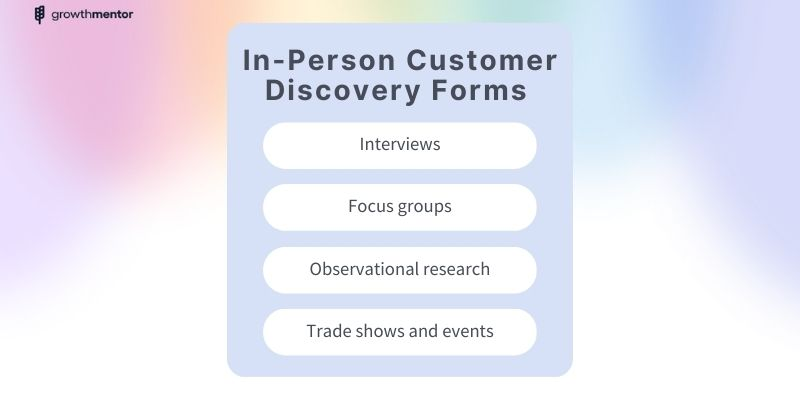
Interviews
Set up face-to-face interviews with people to get in-depth insights into their needs, challenges, and desires.
- Pros: Rich, in-depth insights, personal connection, and non-verbal cues.
- Cons: Time-consuming, logistical challenges, and potential interviewer bias.
Focus groups
Gather a small group of potential clients in a room to discuss their thoughts and opinions on your product, service, or idea.
- Pros: Engaging in group discussions, immediate feedback, and observing group dynamics.
- Cons: Potentially high costs, possible groupthink, and difficulty in recruiting participants.
Observational research
Observe people in their natural environments to understand their behaviors and how they interact with products or services like yours.
- Pros: Unbiased insights into customer behavior, and understanding context.
- Cons: Time-consuming, challenging to draw conclusions, and potential ethical concerns.
Trade shows and events
Attend relevant trade shows or industry events to network with potential customers, showcase your product, and gather valuable feedback.
- Pros: Networking opportunities, exposure to industry trends, and real-time feedback.
- Cons: Can be expensive, time-consuming, and may require significant planning.
Analyzing data and identifying patterns
One key step in the customer discovery process is to dive into data and spot those elusive patterns.
By mastering this, you’ll be able to get inside your customers’ heads, figuring out their behavior, preferences, and needs.
So, let’s break it down into easy-to-navigate steps:
- Collect data: Chat with customers through interviews, surveys, or feedback forms to get all the info you need.
- Organize data: Keep everything organized with handy tools like spreadsheets, data visualization software, or customer relationship management (CRM) systems.
- Spot trends and themes: Uncover hidden patterns in your data by looking at correlations between different factors. For instance, see if certain demographics are more likely to love your product.
- Seek out outliers: Find those unique data points that don’t quite fit the norm. They might just reveal some priceless insights into customer behavior or market trends.
- Turn insights into action: Use all the amazing discoveries you’ve made to supercharge your customer discovery process. You can refine your value proposition or even identify fresh customer segments.
Applying customer discovery insights to your startup
Harnessing the power of customer discovery insights could be your secret weapon!
When you tap into the wisdom gained from customer interviews and feedback, you can tailor your product or service to perfectly match the needs of your market.
Here are some great ways to apply those insights:
Polish your value proposition
Use the feedback to fine-tune your value proposition and messaging. This will help you communicate your product or service like a pro to potential customers.
Discover new customer segments
You might just uncover some brand-new customer segments you never even thought of before. This can boost your business model by expanding your reach and growing your customer base.
Craft a customer persona
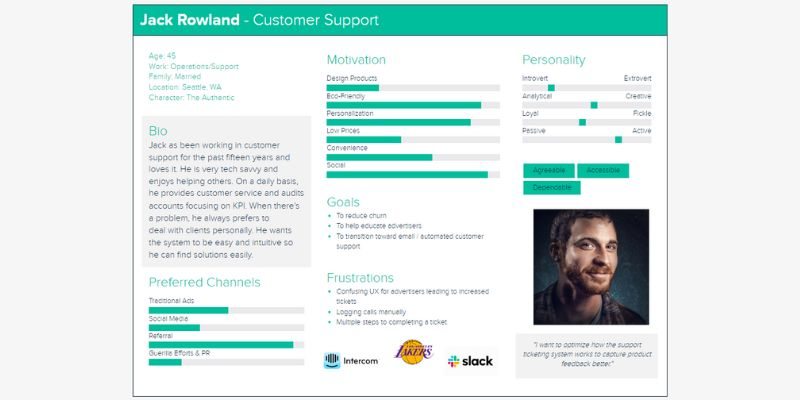
With the insights you’ve collected, create a customer persona that captures the essence of your target market. This will help you design a product or service that truly resonates with their needs.
Bring your MVP to life
Put together a minimum viable product (MVP) based on the feedback you’ve received. This will allow you to test your product or service in the wild and gather even more valuable input.
Refine the product-market fit
Use the insights to fine-tune your product-market fit. This will ensure your product or service is hitting the mark with your market and well on its way to achieving that oh-so-coveted product-market fit.
When does customer discovery stop?
If you’re wondering when you’re finished with customer discovery, the answer is never!
Customer discovery is an ongoing process that should be built into your startup’s DNA.
To get started, aim to interview at least 30 potential customers to gain a deep understanding of your target market’s needs and pain points. This will help you validate your business assumptions and refine your value proposition and messaging.
But don’t stop there!
Continuous customer discovery is critical for building a successful business.
By staying connected with your customers and constantly seeking feedback, you can identify new trends and insights, adjust your business model, stay ahead of the competition, and continue to evolve and improve your product or service over time.
So, keep those customer discovery interviews coming, and be sure to build continuous customer discovery into your startup’s culture. By doing so, you’ll be well on your way to building a successful business that truly meets the needs of your target market!
Final thoughts
I hope you got it now!
Customer discovery is your secret weapon for startup success and product development.
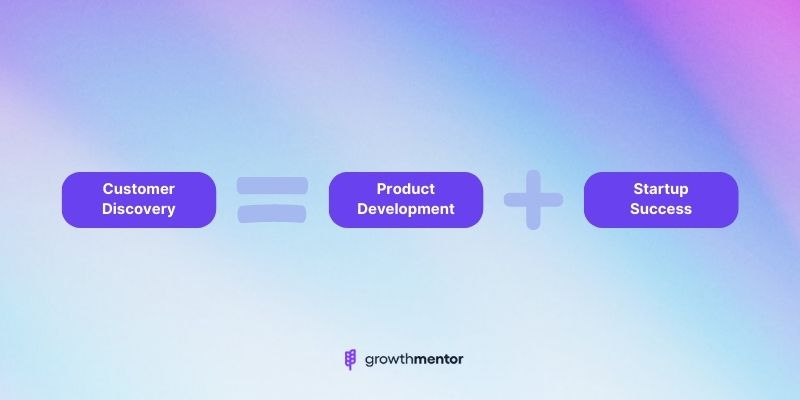
Want to boost your chances of hitting that sweet spot of product-market fit and building a thriving business? It’s all about tuning into your customers.
By understanding their needs and pain points, and weaving their feedback into your product or service development, you’re setting yourself up for success.
Don’t be afraid to test and iterate on your ideas!
Use customer input to fine-tune your value proposition and messaging, create customer personas to really get to know your target market, and track your progress along the way.
And remember, customer discovery is like a never-ending treasure hunt, so stay curious and keep learning from your customers.
So, what are you waiting for?
Put these best practices to work in your own startup or product development adventure, and watch as you create a product that truly captivates your target market.
Happy discovering!
Frequently Asked Questions
Customer discovery is the process of talking to potential customers to gain insight into their needs and pain points.
Customer discovery is important because it helps you build a product or service that truly meets the needs of your target market.
Conduct customer discovery interviews by asking open-ended questions and actively listening to your customers.
You can determine if you have achieved product-market fit by analyzing key metrics such as customer satisfaction, retention rates, and revenue growth.
Use customer feedback to make iterative improvements to your product. This involves identifying areas for improvement, testing new features or changes, and collecting feedback to assess the impact.
Customer discovery can be conducted at any stage of a product’s life cycle, including after the product has been launched. It’s never too late to listen to your customers and make improvements to your product or service.

